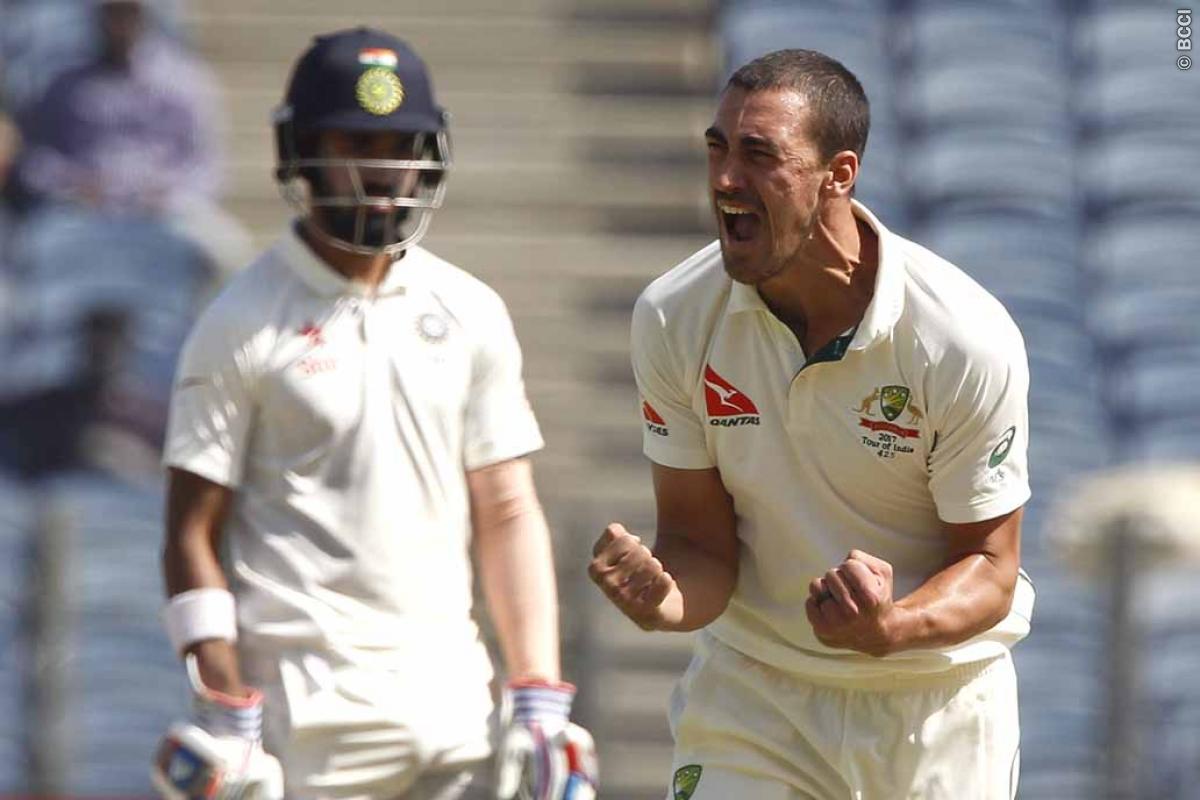Australia digs its own grave as India finally ready to claim Down Under prize
There was a thing about Australian Cricket that it used to pick itself up from all the sordid mess and keep on doing the one job that they do efficiently - winning. It was the culture which signified Australian character amid all the bullish, Holier than thou attitude that engulfed their psyche.

However, the tide has changed massively in Aussie cricket after the Newlands scandal. From being the most dominant and offensively bold team force in the sport to being annihilated in the almost-familiar conditions in South Africa and then on the placid UAE pitches to Pakistan, it has been quite a downhill ride after Cricket Australia handed over the bans to Steve Smith - the modern-day Bradman, David Warner - Australia’s answer to Virender Sehwag in Test cricket, and well, Cameron Bancroft, a not-so-significant, but very important character in the present context.
It might turn disastrous once again as an in-form India will come face to face with them in a four-match Test series, starting December 6 at Adelaide Oval. The hosts might have a top-class bowling attack, led by three excellent fast bowlers in Mitchell Starc, Josh Hazlewood, and Pat Cummins, their batting is depleted and it hasn’t helped that the selectors decided to leave out Glenn Maxwell and Matt Renshaw in favour of Travis Head and Marnus Labuschagne.
When Renshaw came to India for the Test series last year, there were a lot of question marks over his ability to counter the challenge of facing high-quality spin on turning surfaces. He was a batsman played all his cricket on the pacer-friendly wicket of Queensland and his time in India was not going to be easy. However, he made everyone surprised and faced as many as 606 balls in four Tests - more than Virat Kohli, Murali Vijay, and David Warner combined - and compiled 232 runs at 29.00. While he failed to convert his starts to big scores, Renshaw's patience was one of the key factors in Australia's competitive performances in the second and third Tests.
However, his form was on a downhill spiral and he was eventually dropped from the team halfway through the Test series against Pakistan but was almost certain to be in the starting XI for the Adelaide Test after he made an unbeaten 145 for Toombul in Brisbane. But his Sheffield Shield form was far less productive as he was dismissed for 3 and 0 against South Australia. But in the next match, he made a fine 89 against WA which speaks the volume of the fact that he can make a comeback to form and all he needs is a bit more confidence on him.
While there was an assertiveness with the way he bats, there was constant criticism for the way he scores those runs - a slow and orthodox Test match approach which is a throwback to a time match-saving innings was a celebration of brevity. As a matter of fact, only two Aussie openers - Greg Blewett and Ed Cowan - have batted slowly than Renshaw and the rest 19 bats with a higher strike-rate. Against an Indian bowling line-up which is breathing fire and there is no way, they will be less productive in Australia, all the team needed a strong-headed person at the top to play out the new ball, which would have given a semblance of hope to other players in the middle-order.
Looking at the last Pakistan series, one thing is clear that the Australian batsmen don’t have the proper defensive technique and that resulted in them edging more often, but Renshaw is brilliant at it. He hardly ever loses his wicket while defending and loses his wicket in every 103 balls while defending at a time Test opening batsmen lose their wicket in 71.3 balls.
The opposite holds true for Glenn Maxwell. The Victorian is a hard-hitter who swears by his strike rate rather than average. While there is no doubt to the fact that he is an erratic performer in the red-ball format of the game, it must not also be forgotten that last summer, he tallied 707 runs at 50.50 in the Shield cricket, including one

 ©
© As per Cricviz data analysis, Maxwell has played less false shot percentage and only seven players have batted with lower ‘risk’ proposition in the domestic first-class competition. However, of those players with a lower false shot percentage than the Victorian, none play more attacking shots than him. This is the nature that makes Maxwell stand out among the lot and it is only prudent to give him chance in the team that is made of straw and tissue paper, and hardly any spine.
Instead of ousting Maxwell for the tour, Cricket Australia should have asked themselves the question where was the fault initially. The management first restricted him from signing an English county contract mid-year in 2017, saying he should instead prepare for Australia A’s tour to India in August and September. While that was a good way to keep him in the scheme of things, they eventually didn’t choose him for the tour of Pakistan, despite his proven credential of batting well on sub-continent wickets. Then, the selectors didn’t mind adding Usman Khawaja, Travis Head, and Marnus Labuschagne thanks to their performances on that A tour in Bangalore and sent Maxwell a clear-cut message, which I think they were not even aware of earlier.
Head and Labuschagne are talented no doubt, but the former is nothing but a disappointment everywhere. He had flashes of promise in the UAE, but after missing out in his only Shield innings before a nightmare one-day series against South Africa, he is under relentless pressure. On the other hand, with scores of 3, 28, 10, 11, 52 and 4 in the latest rounds of Shield cricket, Labuschagne can never be a threat to India who
Marcus Harris is definitely an inclusion Australia
One might argue the same against India as well whose batting is no less than disappointing and especially the way they played spin bowling in Southampton and the struggle against English pacers is a story told so many times to be repeated once again. While the movement through the air and off the seam created regular problems for Indian batsmen - apart from Virat Kohli - in England, it will be the extra bounce in Australia that will be a factor. But this Indian team as proven in the last series in 2014-15, have always been better in playing authoritative horizontal bat shots and can cope with the testing extra bounce. The inclusion of Rohit Sharma again has made it even stronger and unless the team tries so hard to lose the series, they will escape through a 2-1 series win at least.
The series was already easier for India thanks to the numerous factors leading up to it, but Aussie selectors have made it even more smooth for the Virat Kohli team. The current Indian Test setup may not seem receptive to new ideas, but understands the vast importance of working as a team than individuals, which Virat Kohli has always maintained and despite the loss to England and South Africa, they had a bite to match the bark. Rest assured, Adelaide will set the tone and only a miracle can see Australia restore the Border-Gavaskar Trophy in Sydney.

Comments
Sign up or log in to your account to leave comments and reactions
0 Comments